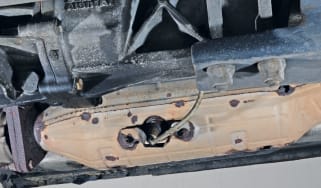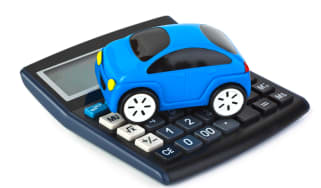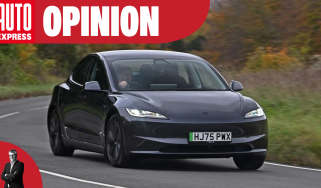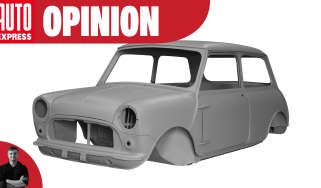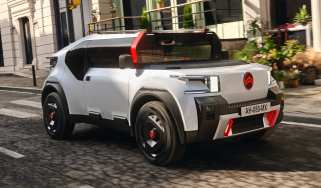How does mileage affect car value?
Mileage is a big factor in car depreciation so let’s explain the effect that the miles on the clock have on the value of a car
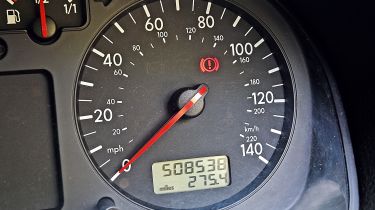
You won’t have failed to notice that as a car gets older, it loses value. In fact, a car is worth less than its brand new price from the moment you attach a set of number plates to it and drive it away from the showroom.
There are lots of factors at work in this but one of the main drivers of car deprecation is mileage: it’s almost universally the case that a higher-mileage car will be worth less than an otherwise identical car on lower miles. Buyers tend to favour lower mileage cars because they should look and feel fresher than a car that’s covered thousands more. Mileage in car terms equates to use.
There are several other reasons mileage can affect a car’s value too, and in our guide below we explain why this is the case, what impact mileage has on a car’s various components, and how much mileage affects a car’s used value, potentially influencing how much you’ll get when you sell your car.
If you want to sell your car without the faff of dealing with tyre kickers coming to your door, take a look at the Auto Express Sell My Car service to get an estimated value on your car.
Why does mileage affect car value?
If you were to run 10 miles in a new pair of shoes you may find that when you finish they will still feel relatively new, but run 100 miles and they may start showing signs of that use. With cars it’s no different.
Driving miles in a car will cause wheels, tyres and components to begin to wear out, not just requiring replacement and the costs that come with it, but potentially reducing a car’s reliability unless it is meticulously maintained. Roads aren’t perfect so paintwork and glass will get stone chips, wheels can end up kerbed, suspension components wear, all of which will leave the car feeling less precise. Even the interior can’t avoid wear, with scuffed trim, shiny steering wheels and frayed seat edges being signs of use.
Of course, older cars can lose value for other reasons, such as simply going out of fashion as they age, powertrain preferences changing (such as electric cars becoming more popular and diesel cars less so) or as government regulations make running an older car more expensive because of its emissions. But mileage is one of the primary, and most predictable, drivers of depreciation, as consumers view a high-mileage car as being less fresh, potentially more problematic, and in need of more frequent maintenance.
The impact of mileage on car parts
The longer you drive a car, the more likely it is that parts will begin to wear out, needing replacement and potentially affecting its reliability. Here are some of the main components likely to be affected by mileage.
Engine
Engines are one of the most complex and under stress parts of a car. This is down to the heat and pressure which affect almost every component. Interestingly, engines can actually perform better with a few miles under the car’s wheels – they typically have a ‘running-in’ period where essentially a certain level of wear helps them free up, a little like a new jumper feeling a bit odd until it conforms to your body shape.
But over time and higher miles, friction and wear can leave an engine feeling less responsive, less efficient, and it can begin to develop problems. Modern engines though are in general far longer-lasting than older ones; if regularly serviced, engines can last well over 100,000 miles.
Transmission
Like a car’s engine, its transmission – including the gearbox, clutch, flywheel, differential, and components like propshafts and drive shafts – involves a lot of moving parts interacting with other moving parts, protected only by a thin film of oil. Like engines, transmissions last a lot longer than they used to, but aren’t immune from wear and tear. This is particularly the case with manual gearboxes, as poor shifting technique can very literally take chunks out of the gears or burn up the clutch.
Brakes
Along with tyres, brakes are probably the component that most drivers are familiar with as being wear and tear items. They operate by friction between brake discs and brake pads, and this friction naturally wears away both components until they need replacing.
In electric vehicles this process can take a lot longer due to the brake energy recovery systems doing quite a lot of the slowing down that’s needed. That doesn’t mean that EVs are immune from brake wear – and as many brake components, such as discs and hard brake lines tend to be made from ferrous metals, they may eventually need replacing simply due to corrosion.
Suspension and steering
If you’ve ever had to have a spring replaced at MoT time you’ll be aware of the effects mileage can have on suspension components. Particularly as the UK’s road surfaces deteriorate, your car’s suspension has to work harder to keep you comfortable.
The components that would be most at risk of deterioration would be the springs, dampers, and bushes as those soak up most of the impacts from potholes and the like. They’re also not immune from deterioration as a result of environmental factors like water and salt causing corrosion and rust, or even other substances being kicked up from the road surfaces as you go along.
Steering systems tend to be fairly trouble-free these days but components more exposed to the elements, such as bushes and drop links, can also suffer over the miles.
Tyres
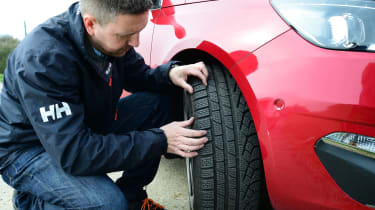
This is perhaps the most obvious item on this list. Made from rubber, tyres basically sacrifice themselves to give you grip, wearing away from friction with the road surface. Tyres can wear at very different rates depending on their compound and design, but all will need replacing eventually, even if they deteriorate purely due to age.
Cooling System
The cooling system is a vital part of a car, and even applies to modern electric vehicles, which typically have systems to keep their batteries at the best operating temperature. Any system that involves pumping a liquid around can leak though, and mileage and age can both see lines and fixtures deteriorate to the point they need fixing or replacing.
In combustion vehicles, coolant, which also serves as anti-freeze in winter, can also absorb moisture and become less effective. Water pumps and the belts that drive them also wear out with use.
Electrical Components
In theory some electrical components can last almost indefinitely, though in reality they’re still affected by use, climate, and the knock-on effects of the components around them.
Water ingress can obviously be bad and is more likely on older cars, as seals wear out and allow moisture into sensitive areas. Insulation around wires can chaff and expose the wires inside, and every electrical connector is a potential failure point as plastics fail and contacts become corroded.
How much does mileage affect car value?
While it varies from car to car, the rule of thumb for a new model bought in the UK is that it will lose approximately 20 per cent of its value every 20,000 miles. So if you buy a new car for £25,000, you can expect it to be worth £20,000 at 20,000 miles, £16,000 at 40,000 miles, around £12,800 at 60,000 miles, and so-on.
There are several exceptions, so this certainly isn’t a hard and fast rule. One key factor is service history, or more pertinently a lack thereof. Fail to get your car serviced at the correct intervals and buyers may see it as more of a risk, so your car will depreciate quicker than one that’s been better looked after.
Many people make the mistake of thinking that you only need to get the car serviced when it reaches a certain mileage but this isn;t necessarily the case. If your car requires a service every ‘8,000 miles or once a year’ and you only do 2,000 miles a year, you still need to service the car every year otherwise you won’t have a full service history. It varies from car to car so make sure you consult a dealership for the proper service schedule.
Certain cars are simply more desirable than others too, whether down to rarity, badge appeal, or certain characteristics, and these are likely to depreciate more slowly. It’s not unusual for in-demand performance cars to lose very little value at all, in some cases even increase in value, or at least shed it more slowly than mainstream models as the miles rack up.
Past a certain point, generally beyond 100,000 miles, extra miles don’t make much difference to a car’s value either - eventually, cars hit the bottom of their depreciation curve, and will change very little in price regardless of how many owners they’ve had or how many miles are on the clock. Some may eventually begin to appreciate, as they’re considered classic cars - but this can be after spans of 20 years or more, so isn’t especially relevant for new car buyers.
Our parent site Carwow has run the data from its Sell My Car service and found that cars tend to lose value fastest after around 60,000 miles, or around six years old for cars that have covered around 10,000 miles per year. So if you’re looking to sell a car, you may get the best money for it before this point, while if you’re a buyer, the biggest bargains may be above 60,000 miles.
What is good mileage for a car?
Modern cars can happily cover 100,000 miles or more without any notable issues, especially if they’ve been serviced correctly and regularly. So if you’re shopping for a used car, even an older one, you can be confident in almost any car with a mileage under six figures.
Does car type affect mileage?
Anyone can drive a car to a high mileage, but there are some which are far better suited to driving further than others.
This will affect how you use the car, and also the mileage you’re likely to see on used models as a buyer. Below are some of the factors that might influence whether a car covers high mileage or not.
Vehicle purpose
Some cars are better suited to covering high mileage than others, and this will be reflected in how many high-mileage examples of a vehicle you might find. Executive saloons and large SUVs are engineered to be more comfortable over long distances so tend to be bought by drivers who spend a lot of time on motorways. As a result you may find that the used market has a far larger number of high mileage examples of these cars than small city cars or superminis.
Quite a few SUVs are built to a fairly tough and demanding standard to be able to handle the physical strains of off-roading - even if they never venture off road - so certain components may last far longer.
Conversely, bigger and heavier vehicles may well go through consumables faster than smaller, lighter cars, so even if the rest of the car wears its miles well, be prepared for SUVs and performance cars to need more regular tyre and brake changes as they rack up the miles.
Driving conditions
Where a vehicle is likely to be driven will affect its mileage and ultimately its condition. Smaller cars tend to be used mostly in towns and cities, doing only a handful of miles per day.
While they’re often capable of much higher mileage, it means you’ll often find low-mileage examples of cars like the Vauxhall Corsa and Renault Clio. That said, city use can be strenuous on a car thanks to constant stopping and starting, and the demands of kerbs and speed bumps, so low mileage won’t necessarily equate to better condition on these kinds of car.
Likewise, larger cars driven for longer distances may well show higher mileage and in a shorter space of time - more than the oft-quoted 10,000 miles per year average - so don’t be put off by a BMW 3 Series, for instance, with six figures on the odometer. Motorway driving is relatively untaxing for a car with a bigger, lazier engine and motorways tend to be better surfaced too, so again, high mileage won’t necessarily mean more wear and tear.
Technology
You might think the complexity of a high-tech car might affect its ability to cover large mileage, perhaps by introducing more potential failure areas. But it’s the quality of that technology that seems to matter more for longevity and the ability to cover high miles - take the Toyota Prius for instance, whose hybrid drivetrain seems complex but has proven capable of covering hundreds of thousands of miles without issue.
Diesel cars used to have a reputation for being able to cover large mileages, thanks to tougher engine blocks and fewer parts compared to an equivalent petrol engine. The complexity of various emissions systems has changed this dynamic somewhat, but modern petrol and diesel engines are still capable of huge distances.
As are some electric cars, with plenty of evidence of Teslas covering hundreds of thousands of miles. Some of these have needed new motors and battery packs, at great expense, but mostly at far higher mileages than most drivers will ever cover in a car. Of course, some EVs have less of a reputation for longevity, with some battery packs in early Nissan Leafs losing much of their original capacity, especially in warmer climates before significant mileages have been reached.
Frequently Asked Questions
Research by our parent site Carwow suggests a car loses value the quickest after around 60,000 miles, though depreciation slows significantly after around 110,000 miles.
Did you know you can sell your car with Auto Express? Get the highest bid from our network of over 5,500 dealers and we'll do the rest. Click here to try Auto Express Sell My Car now...
Find a car with the experts





